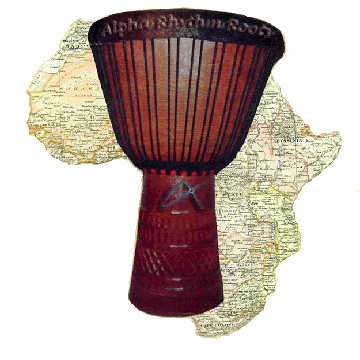Choosing the right authentic Djembe for you
- alpharhythmroots

- Jan 29, 2021
- 2 min read
Transferred from an older blog: Original post date by Alpha (Administrator) on 01/17/11
This article assumes that you have already done part of your homework, and know how to recognize an authentic West African Djembe. We are also assuming that your intention is to buy an authentic professional sized instrument which allows you to learn the playing techniques in a class.
When buying an authentic Djembe drum, pay particular attention to the circumference and height of the Djembe head. If you place both hands flat side by side in the middle of the Djembe head, with index fingers and thumbs touching and no space in between hands, you should have at least a 1 inch space to the edge of the Djembe head from both the tip of your fingers, and from your wrists. If you have less than that, the drum is too small for you to play. The Djembe height should be at least 1 inch higher than the height of your knees when you are seated on a chair. The technique described above works with 99.9% of people. All our professional full sized Djembes have an average head diameter of 13.5 inches, and an average height of 24.5 inches which fits 99% of people. Unless you are as tall as a pro basketball player, you don't have to worry about instrument dimensions when you buy one of our Professional Djembe.

The 2nd thing to consider is the weight of the instrument. There are no direct relationship between the weight and the musical quality of an authentic Djembe. Some players strike very hard when they play, so playing a heavier Djembe will allow them to keep their Djembe more stable. Unless you are one of these very strong strikers, choosing any of our dedicated West African wood type for Djembes will not make much difference. Other players want a lighter Djembe because they are carrying it everywhere all the time! Visit the Djembe wood page of our blog for further information about wood weight relating to wood type.
The 3rd thing to consider is whether you would like a skin rim to cover the ring on the edge of the Djembe. This absolutely does not affect the sound, and is purely esthetics.
The last step is also esthetic, wood color and wood carving. Some people say that the Djembe picks you, not the other way around!
For further information, please read our blog article called "Djembe advice", dedicated to recognizing an authentic West African Djembe from a look-alike.


Comments